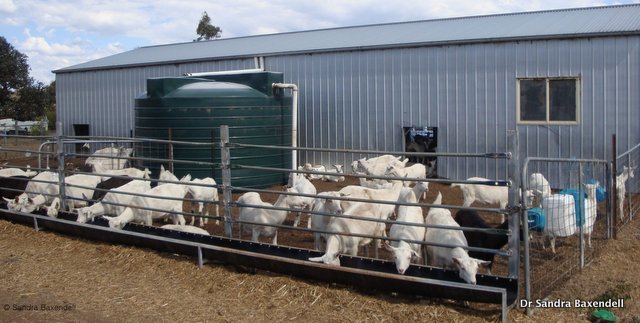There are very few anthelmintic products registered for dairy goats or milking sheep where milk may be used for human consumption.
Many anthelmintics have label instructions that state “DO NOT USE in sheep or goats which are producing or may in the future produce milk where the milk or milk products may be used for human consumption”. Note that veterinarians are not permitted to override these instructions with an off-label prescription. The milk from animals treated with these products can be used in soap-making or for rearing livestock.
There are also no coccidiostats or lice control products registered for use in commercial dairy goats.
Pasture management, rotational grazing, improving nutrition, and genetic selection are all tools that are available for dairy goat and sheep milk producers who have few anthelmintic products available to use on milking animals. However, selecting for milk traits at the same time as worm resistance will slow genetic progress of both.
The best option for dairy goat producers is to feedlot their goats. Feedlotting or zero-grazing is widespread in commercial dairy goat production operations world-wide. Feed bunks must be carefully designed to ensure there is no faecal contamination by the goats. Fence line feeders, where goats have to put their heads through a fence to access their feed, are ideal.

If sheep cannot be zero-grazed, avoid unnecessary drenches by implementing as many of the alternatives above as possible and conduct a worm egg count on the mob each 4–6 weeks. Use the Drench Decision Guide to decide whether a drench is warranted.
If treatment is required, WormBoss recommends using two or more different drench groups approved for milking animals concurrently; either in a combination product or treat with one product then go up the race again using the other product.
|
When using anthelmintic products in goats, a veterinary prescription is often required because:
While cattle drenches can be used at the label rates on goats in South Australia and sheep drenches on goats in Victoria, a veterinary prescription is still required for dose rates recommended for goats. |
Because drench resistance is already widespread, using both products concurrently (if worms are already resistant to them) will kill more of the worms in the animal. Secondly, it slows down the development of drench resistance compared with using just one product at a time. Rotating drenches has minimal effect in slowing drench resistance.
If feedlotting (with zero-grazing), drench into the feedlot (for goats, use the two drenches registered for use in dairy goats [Caprimec or Virbamec Oral* and Panacur 25] concurrently, as described above) then conduct a WormTest 10–14 days after. If worm eggs are still present at 10–14 days, the drench was not fully effective. However, provided the egg count is well below drenching thresholds and the animals are to stay in a zero-grazing situation, a further drench should not be needed. If the count at 10–14 days was positive, continue testing at 6 weekly intervals until counts are below 50 epg. With zero-grazing, provided no worm larvae are brought in on cut-feed, e.g. green-chop, hay or silage, then worms inside the goats will die over some months.
Once counts are close to zero, it may be wise to monitor periodically each 3–6 months (or earlier if signs indicate worms) to ensure that worms have not been introduced on feed.
Globally, there is concern about constant confinement of livestock and unnatural methods of housing. Some European countries now encourage dairy cattle farms to allow cows to have access to some small areas of pasture for grazing that they can access from their normal shedded environment at will. This would be very detrimental to goats, which do not have the same age resistance to parasites that cattle develop. The small grazing area would quickly become heavily contaminated with worm larvae if used for dairy goats.
* Note that Caprimec is being discontinued by Virbac, but instead they have registed Virbamec Oral for goats. It has exactly the same ingredient as Caprimec (abamectin) at the same concentration, and same witholding periods.